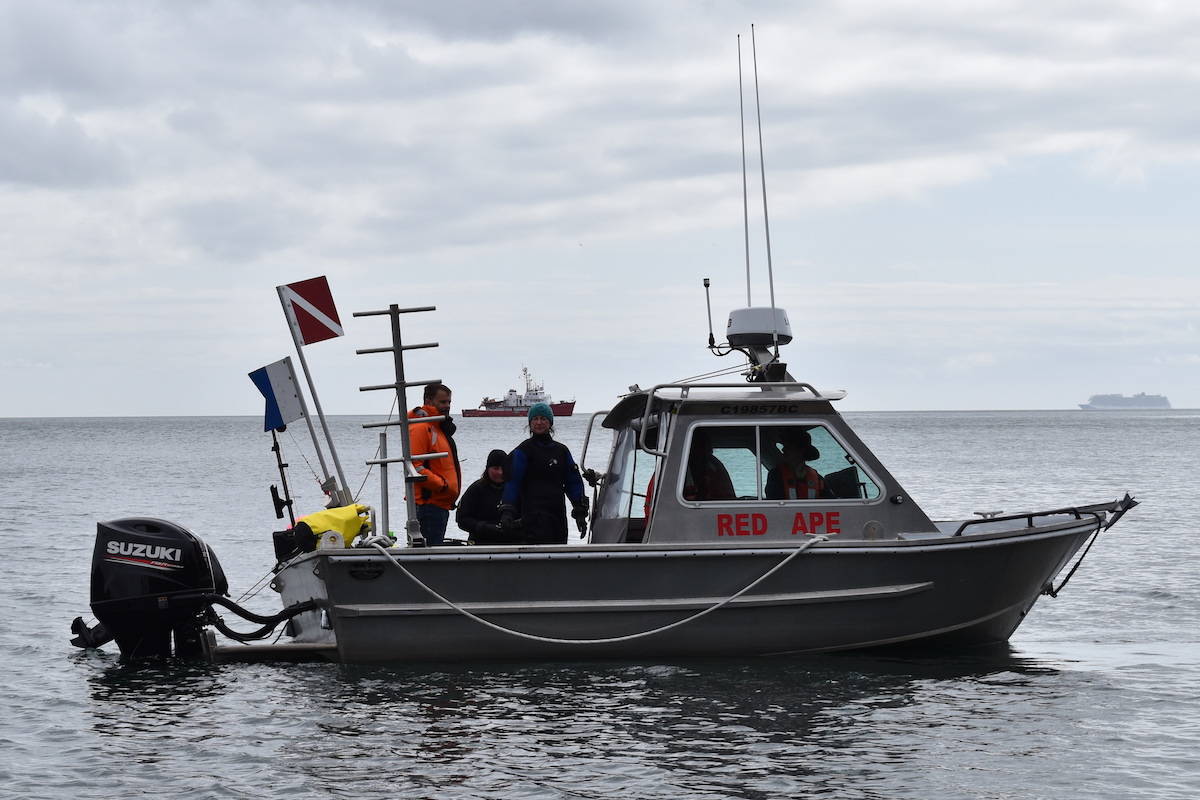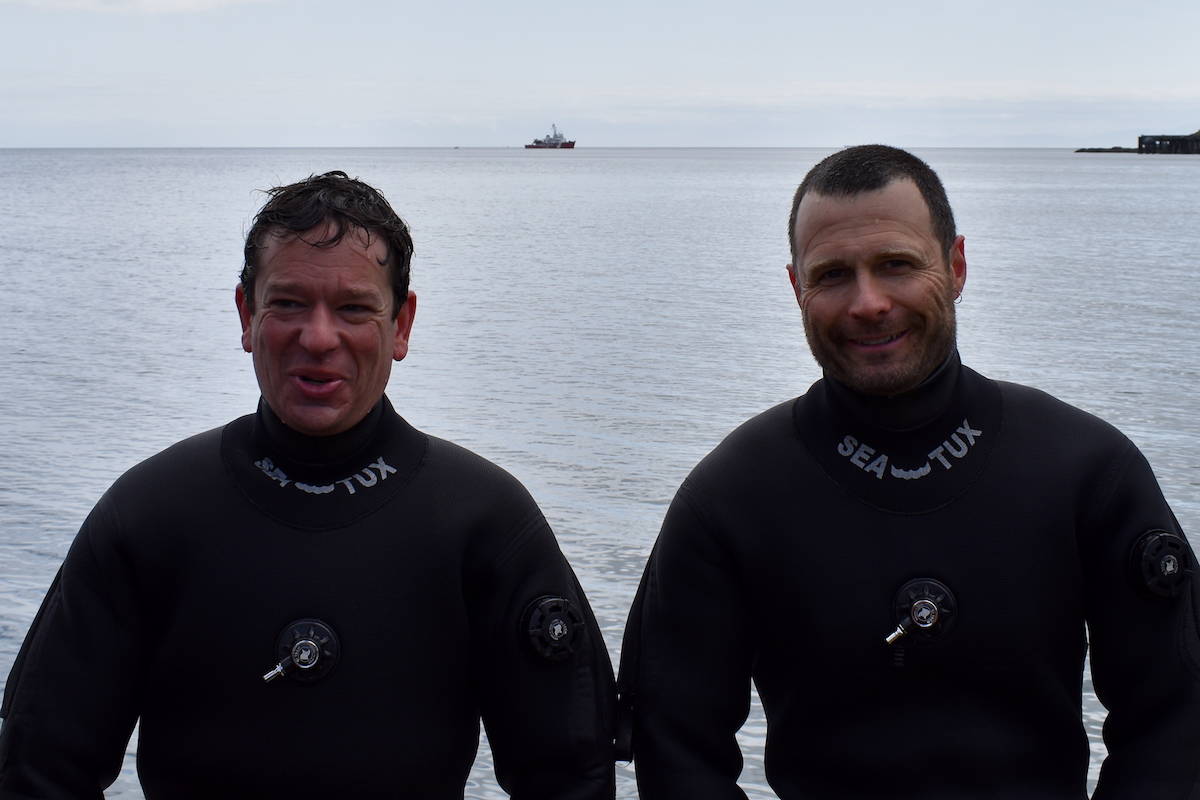Fisheries and Oceans Canada (DFO) are using scuba diving scientists in their attempts to get vulnerable marine species off the endangered list.
Some of the best scientists in the country work for the DFO and many operate out of the “brain hub” in North Saanich, home to a number of government agencies, such as the Institute of Ocean Sciences and the Geological Survey of Canada.
Next door is a Canadian Coast Guard (CCG) base, where personnel offer logistical support to scientists from a range of universities and government affiliated bodies.
Arresting the decline in northern abalone health and numbers is one such project DFO scientists and the Coast Guard work together on. Using Coast Guard ships and know-how, scientists are able to stay at sea for up to 28 days and access remote areas otherwise beyond their reach.
Last week, a team of eight scientists was installed on board the CCGS Vector with a mission of visiting northern abalone sites off the southern coast of Vancouver Island. They aimed to record specimen measurements, population density and the habitat health of a creature protected under law from harvest.
As well as being excellent in their field, the scientists were a hardy bunch, with decades of experience in scuba diving and piloting boats in squally weather.
They methodically conducted eight one-hour dives a day, suiting up rain or shine, and tossing themselves into the cold water to survey the sites.
Northern abalone (Haliotis kamtschatkana) is a marine snail, with beautiful shells that have been highly prized in the past. The creature breathes through holes in its shell and filters dissolved oxygen with its gills. It has a muscular foot that is fringed with tentacles and lives among shallow rocks, in patches around B.C.
RELATED: Coast Guard shows off Canadian can-do attitude
These 10- to 160 millimetre-long invertebrates are now on the endangered list and adults have declined 90 per cent since 1978. The molluscs are vulnerable as they live for 20 years, grow slowly, mature late and only reproduce sporadically. Add in habitat loss, an abundance of predators and the biggest threat – illegal harvest – and you have a species struggling to survive the 21st century. Significantly poachers target the larger adults, often leaving young females who produce fewer eggs.
“Right now we’re seeing smaller, younger abalone and not as many big adults in our index sites. Traditionally the minimum size limit for commercial fisheries was 100 millimetres and now we don’t see as many individuals in that size class,” says Shannon Obradovich, stock assessment program head for marine invertebrates at the DFO.
“Population density is some areas of B.C. is so low that successful reproduction is unlikely.”
ALSO READ: BC Ferries launches summer discount promotion
Index sites are investigated every five years and the program has a modest budget of $40,000 that covers sampling supplies, and skiff and dive equipment maintenance costs.
Obradovich thinks using scuba divers is important to give abalone the best chance of survival.
“Northern abalone are an important part of the near-shore ecosystem. They are prey for other animals and they themselves feed on kelp. Historically they have also been important to First Nations in British Columbia, ceremonially and as an important food source.”
nick.murray@peninsulanewsreview.com
Like us on Facebook and follow us on Twitter




